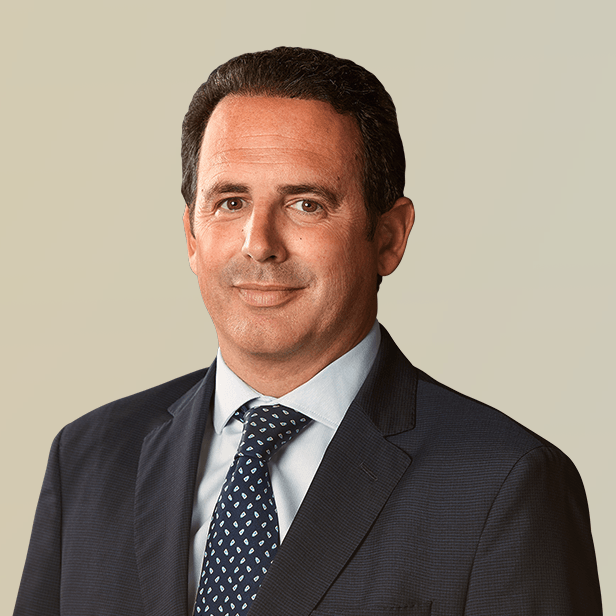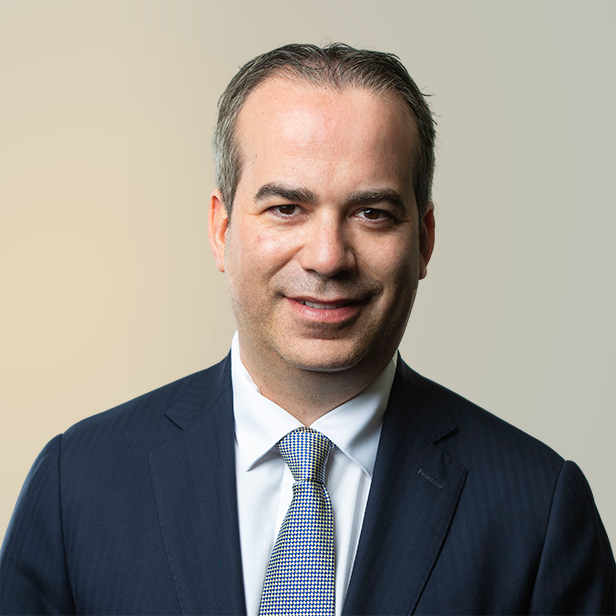Pitchbook | Q&A: The State of Private Debt
Oct 2019
View original post from Pitchbook on October 8, 2019 here. ![]()
What are the key drivers that have propelled the rise of private debt, and which of them will persist in enabling growth in the future?
Aude: Private debt as an asset class has emerged when the search for yield met a liquidity gap in the market—i.e. supply of capital met demand for new financing sources as banks exited the mid-market in response of the financial crisis. Given the success to date of private debt strategies, and the always-increasing regulatory burden on European banks, this trend seems unlikely to stop in the mid-term.
Serge: Institutional investors (insurance companies, pension funds, etc.) are looking for decent yields on bonds. Today sovereign debt doesn’t provide satisfactory yields and consequently investors have turned to corporate bonds. In that category, default rates on buyouts are very low and have been since 2012; at the same time yields provided by debt on these companies are significant, for instance, around 400bps in Europe. Institutional investors don’t have the capabilities nor the resources to originate these opportunities. They rely on third parties—private debt lenders—which have the credit analysis experience and track record, the origination capabilities, and portfolio monitoring resources to tackle these opportunities.
 |
Private debt has been growing since the 2008 downturn, so it has been a decade-long trend that we believe will persist for the foreseeable future. | Christine Tiseo |
Christine: It’s similar in the US. Private debt has been growing since the 2008 downturn, so it has been a decade-long trend that we believe will persist for the foreseeable future. Historically, asset managers and LPs did not have an allocation strategy to this asset class, but as the market has become educated about direct lending, private credit has become an accepted category to diversify assets and is now part of many asset allocation strategies. Further, a preponderance of private credit financings are floating-rate securities, providing investors with protection against rising interest rates, which may be less of a concern today, but not too long ago was top of mind for many asset managers. Finally, banks continue to be quite conservative in their lending practices and criteria; therefore, private debt has evolved to cater to the private equity (PE) community by providing more flexibility in the form of lower amortization and better covenant packages, as well as deeper leverage.
How has the overall M&A and buyout cycle aided and abetted the demand for private debt?
Serge: Due to their limited scope of activities, private debt lenders have fewer constraints than commercial banks (especially with regard to regulations) and can offer leverage based only on the credit characteristics of the opportunity rather than a more policy/regulatory type agenda. Private debt lenders generally underwrite 100% of the facilities they arrange and tend to take and hold those financings (especially for senior stretched or unitranche facilities). This positioning enables the acquirer to raise financing in an expedited fashion, especially when compared with banking facilities. This is a key advantage in a competitive M&A process.
Christine: It is a bit of a circular feedback cycle—as valuations go up, lenders are willing to expand the leverage multiple; concurrently, as lenders provide more leverage at attractive rates/structures, buyers can pay more for acquisitions. With record levels of fundraising, debt capital plentiful and the proliferation of lending platforms, competition for new-money deals continues to drive lenders to the outer margins of total leverage, thereby fueling the market and driving higher valuations. That said, we have observed many lenders staying fairly disciplined on the loan-to-value relationship when structuring a financing, which is very different than the thinly capitalized LBOs of the past, albeit on what could be inflated values.
 |
Two key sectors for private debt are technology and healthcare. These are also very active sectors for M&A and there is no doubt widely available liquidity has boosted buyout activity. | Aude Doyen |
Aude: Two key sectors for private debt are technology and healthcare. These are also very active sectors for M&A and there is no doubt widely available liquidity has boosted buyout activity. However, private debt lenders are very discerning, and segments’ relative attractiveness can be situational and also vary within those broader arenas. For example, an IT business focused on one-off implementation projects is not as attractive as a SaaS provider with recurring revenues. Lately, there is also greater heed paid to resilience to a potential recession on the credit side. But to date the impact on valuation expectations on M&A deals is yet to be seen—the large number of available financing sources may explain this.
Serge: Currently, median transaction multiples targeted by sellers encourage high leverage. Private debt lenders have actually contributed to that increase by focusing on bullet financings versus amortized loans. Moreover, the liquidity provided by private debt players favors the overall M&A cycle.
We note that penetration rates of private debt vary significantly across jurisdictions. How would you explain this as benefits to borrowers seem quite obvious?
Christine: While I am not an economist by any stretch of the imagination, I think the US private debt markets developed quickly as a result of very loose monetary policy combined with a restrictive regulatory environment, but were also offset by a broader US financial system that can morph and adapt rapidly to changing conditions. As money came flooding into the system to keep interest rates low and fuel growth, it had to go somewhere, and with the banks hamstrung and unwilling to lend to middle market borrowers, new financing vehicles formed to absorb the liquidity in the system and fill gaps across the credit markets. In Europe, private credit formation may have been slower compared to the US due to different economic and structural circumstances.
Aude: The same reasons underpinning the emergence of private debt explain the phased penetration of the product in Europe. The first adopter was the UK, where the concentrated commercial bank market failed to provide sufficient liquidity to mid-market borrowers when European banks retreated back home. Unsurprisingly, next stops were the other two core European markets, Germany and France, which initially benefited from a more state/regional, fragmented banking network. With the intensification of competition, private debt lenders are now looking at new geographies including those where commercial banks had historically remained supportive of borrowers (Benelux, Nordics) but are now suffering from ever-increasing regulatory burdens (Basel III, Basel IV) and those which were historically regarded as riskier or more challenging from a credit point of view, e.g. Southern and Central & Eastern Europe.
Serge: Private debt funds are expanding geographically by opening offices in key European countries, plus raising funds across different strategies, e.g. senior stretched versus unitranche versus mezzanine.
Given the current environment, how are private debt fund managers evolving their strategies?
Christine: We have seen three macro trends: 1) lenders are highly focused on larger hold sizes and growing their asset base to provide single lender solutions to PE-backed businesses; 2) lenders are offering more debt products and continuously looking for gaps in the market and evolving their security types to address balance sheet gaps (as an example, we are seeing more capital formation around “structured capital solutions” which are debt-equity hybrids used to finance stressed/troubled credits; and 3) focusing on unsponsored transactions to widen the opportunity set.
Aude: I agree with Christine. Over the last year, we have seen private debt funds entering into more direct competition with the syndicated markets (e.g. the Daisy Group financing by Ares) at the upper end. At the other extreme, we have also seen more liquidity available to the lower end of the mid-market. This space is less competitive, attracts a pricing premium owing to the riskier profile of borrowers, and is welcoming the product as banks seem to have less appetite. Anecdotally, one debt manager said to us they were considering setting up a bespoke lower-mid-market fund to beat competition and invest in small but high-growth businesses at an earlier stage. One of the key objectives for debt fund managers is to remain invested in credits they know and that have grown, instead of being refinanced on the first occasion.
 |
We have seen that some private debt managers have got a better track record at staying in the capital structure. Portfolio management is a real topic; however, the original team remains the key counterparty especially in Europe where private debt remains centered on relationship lending. | Serge Palleau |
Serge: We have seen that some private debt managers have got a better track record at staying in the capital structure. Portfolio management is a real topic; however, the original team remains the key counterparty especially in Europe where private debt remains centered on relationship lending. Currently, private debt funds that are incumbent lenders are ready to propose reduced arrangement fees on new financings for an existing client.
Are there concerns around the degree of discipline in the market with regard to covenants, EBITDA adjustments of underlying portfolio companies, or the like? How valid are these concerns?
Aude: While lender protections under loan documentation have become increasingly looser, private debt funds lending to the mid-market have generally retained the key leverage covenant rather than going entirely “cov-lite”. In addition, some private equity professionals indicate their portfolio monitoring is not solely focused on debt covenants. They assess performance on KPIs, which are more stringent and thus can provide a warning to management and shareholders.
Serge: EBITDA adjustments need to be precisely described and usually reviewed by auditors to be taken into account in part or in whole by a lender. Covenants depend on the size of the financing, the underlying asset, the credit history, and the sponsor. As private debt lenders require fewer covenants than commercial banks, they can fix them using a higher headroom on a base case, and will limit themselves to a net leverage ratio. In France, incurrence covenants versus maintenance covenants still remain a feature of high-yield bonds rather than a proposition done by private debt lenders, except when the financing is on a transaction where the alternative would be a high-yield bond.
Christine: Interestingly, we are hearing a growing concern among LPs, as well as with the leverage line providers backing these private credit funds, that loosening EBITDA definitions and sizable, forward-looking addbacks are too aggressive. In fact, some LPs are actively questioning their private debt managers on these loan definitions and digging deeper into the underlying credit agreements. Also, certain leverage line providers to the private credit funds are scrutinizing these definitions more intensely and signaling that they may start to restrict their advance rates on certain loan assets if these definitions continue to loosen. As a result, we suspect this trend may begin to trickle into loan agreement negotiations and impose more discipline on lenders. If you take into account (i) the meaningful financial covenant cushions lenders are offering to borrowers, tied to (ii) “lender case” financial projections that incorporate a discount to a baseline set of projections, and is further supported by (iii) an EBITDA definition that can incorporate another generous buffer, you can see how the aggregate cushion can quickly grow to an unsound level, leading borrowers to run out of liquidity before they even trip a covenant. LPs are beginning to be in tune with these trends and are acting on it.
Aude: This is clearly something we have experienced first-hand on a recent restructuring transaction—liquidity was an issue even before the compliance certificate evidencing the covenant breach was due. But on the positive side, many borrowers with loose covenants have been offered these because they have excellent credit characteristics. No or limited covenant protection does not necessarily mean a weak credit—in the mid-market it often reflects competitive tension between lenders for deploying capital with the strongest borrowers.
Summary
-
Lincoln International industry experts sit down to discuss the primary factors that are driving the rise and changes across private debt as 2019 winds to a close, and what the future holds for the private debt industry.
- A key feature of the US debt markets since the last recession, private debt funds have become a mainstream source of financing in core European jurisdictions as well, funding over 50% of mid-market financings for the first time in the UK, France and Germany last year.
- Click here to download a printable version of this perspective.
- Sign up to receive Lincoln's perspectives
Contributors

I build trust with clients by putting their interests first at all times.
Aude Doyen
Managing Director & Co-head of Capital Advisory, Europe
London
I strive to be a strong advocate for my clients and offer a fresh and creative perspective to financing situations that exceed expectations and provide the flexibility needed to grow their businesses.
Christine Tiseo
Managing Director & Co-head of Capital Advisory
ChicagoMeet our Senior Team in Capital Advisory

By linking my experience in debt advisory and mergers and acquisitions, I look forward to delivering flexible and innovative financing solutions to make an impact that matters with long-term target clients, as Lincoln does best.
Daniele Candiani
Managing Director & Co-head of Capital Advisory, Europe
Milan
I build trust with clients by putting their interests first at all times.
Aude Doyen
Managing Director & Co-head of Capital Advisory, Europe
London
I take an active role in every stage of the transaction process in order to achieve the goals of my clients.
Iván Marina
Managing Director | CEO Spain
Madrid









